1. Meredith N. Assessment of implant stability as a prognostic determinant. Int J Prosthodont. 1998; 11:491–501. PMID:
9922740.
4. Sennerby L, Roos J. Surgical determinants of clinical success of osseointegrated oral implants:a review of the literature. Int J Prosthodont. 1998; 11:408–20. PMID:
9922733.
5. Klokkevold PR, Nishimura RD, Adachi M, Caputo A. Osseointegration enhanced by chemical etching of the titanium surface. A torque removal study in the rabbit. Clin Oral Implants Res. 1997; 8:442–7. DOI:
10.1034/j.1600-0501.1997.080601.x. PMID:
9555202.
6. Piattelli A, Manzon L, Scarano A, Paolantonio M, Piattelli M. Histologic and histomorphometric analysis of the bone response to machined and sandblasted titanium implants:an experimental study in rabbits. Int J Oral Maxillofac Implants. 1998; 13:805–10. PMID:
9857591.
7. Yeo IS, Han JS, Yang JH. Biomechanical and histomorphometric study of dental implants with different surface characteristics. J Biomed Mater Res B Appl Biomater. 2008; 87:303–11. DOI:
10.1002/jbm.b.31104. PMID:
18435399.
8. Glauser R, Sennerby L, Meredith N, Rée A, Lundgren A, Gottlow J, Hämmerle CH. Resonance frequency analysis of implants subjected to immediate or earlyfunctional occlusal loading. Successful vs. failing implants. Clin Oral Implant Res. 2004; 15:428–34. DOI:
10.1111/j.1600-0501.2004.01036.x. PMID:
15248877.
9. Meredith N, Alleyne D, Cawley P. Quantitative determination of the stability of the implant-tissue interface using resonance frequency analysis. Clin Oral Implants Res. 1996; 7:261–7. DOI:
10.1034/j.1600-0501.1996.070308.x. PMID:
9151590.
10. Sim CP, Lang NP. Factors influencing resonance frequency analysis assessed by Osstell mentor during implant tissue integration:I. Instrument positioning, bone structure, implant length. Clin Oral Implants Res. 2010; 21:598–604. DOI:
10.1111/j.1600-0501.2009.01878.x. PMID:
20666786.
11. Ostman PO, Hellman M, Wendelhag I, Sennerby L. Resonance frequency analysis measurements of implants at placement surgery. Int J Prosthodont. 2006; 19:77–83. PMID:
16479765.
12. Rowan M, Lee D, Pi-Anfruns J, Shiffler P, Aghaloo T, Moy PK. Mechanical versus biological stability of immediate and delayed implant placement using resonance frequency analysis. J Oral Maxillofac Surg. 2015; 73:253–7. DOI:
10.1016/j.joms.2014.09.024. PMID:
25579008.
13. Guler AU, Sumer M, Duran I, Sandikci EO, Telcioglu NT. Resonance frequency analysis of 208 Straumann dental implants during the healing period. J Oral Implantol. 2013; 39:161–7. DOI:
10.1563/AAID-JOI-D-11-00060. PMID:
22103915.
14. Boronat López A, Balaguer Martínez J, Lamas Pelayo J, Carrillo García C, Peñarrocha Diago M. Resonance frequency analysis of dental implant stability during the healing period. Med Oral Patol Oral Cir Bucal. 2008; 13:E244–7. PMID:
18379449.
15. Rabel A, Köhler SG, Schmidt-Westhausen AM. Clinical study on the primary stability of two dental implant systems with resonance frequency analysis. Clin Oral Investig. 2007; 11:257–65. DOI:
10.1007/s00784-007-0115-2. PMID:
17401588.
16. Trisi P, Perfetti G, Baldoni E, Berardi D, Colagiovanni M, Scogna G. Implant micromotion is related to peak insertion torque and bone density. Clin Oral Implants Res. 2009; 20:467–71. DOI:
10.1111/j.1600-0501.2008.01679.x. PMID:
19522976.
17. Barone A, Alfonsi F, Derchi G, Tonelli P, Toti P, Marchionni S, Covani U. The Effect of Insertion Torque on the Clinical Outcome of Single Implants:A Randomized Clinical Trial. Clin Implant Dent Relat Res. 2016; 18:588–600. DOI:
10.1111/cid.12337. PMID:
26043651.
18. Lai HC, Zhuang LF, Zhang ZY. Stability of implants placed in different bone types. Zhonghua Kou Qiang Yi Xue Za Zhi. 2007; 42:292–3. PMID:
17686282.
19. Turkyilmaz I, Sennerby L, McGlumphy EA, Tözüm TF. Biomechanical aspects of primary implant stability:a human cadaver study. Clin Implant Dent Relat Res. 2009; 11:113–9. DOI:
10.1111/j.1708-8208.2008.00097.x. PMID:
18422713.
20. Huang HM, Lee SY, Yeh CY, Lin CT. Resonance frequency assessment of dental implant stability with various bone qualities:a numerical approach. Clin Oral Implants Res. 2002; 13:65–74. DOI:
10.1034/j.1600-0501.2002.130108.x. PMID:
12005147.
21. Friberg B, Sennerby L, Meredith N, Lekholm U. A comparison between cutting torque and resonance frequency measurements of maxillary implants. A 20-month clinical study. Int J Oral Maxillofac Surg. 1999; 28:297–303. DOI:
10.1016/S0901-5027(99)80163-5. PMID:
10416900.
22. Bischof M, Nedir R, Szmukler-Moncler S, Bernard JP, Samson J. Implant stability measurement of delayed and immediately loaded implants during healing. Clin Oral Implants Res. 2004; 15:529–39. DOI:
10.1111/j.1600-0501.2004.01042.x. PMID:
15355394.
23. Horwitz J, Zuabi O, Peled M. Resonance frequency analysis in immediate loading of dental implants. Refuat Hapeh Vehashinayim. 2003; 20:80–8. PMID:
14515631.
24. Polizzi G, Rangert B, Lekholm U, Gualini F, Lindström H. Brånemark System Wide Platform implants for single molar replacement:clinical evaluation of prospective and retrospective materials. Clin Implant Dent Relat Res. 2000; 2:61–9. DOI:
10.1111/j.1708-8208.2000.tb00107.x. PMID:
11359265.
25. Calandriello R, Tomatis M, Vallone R, Rangert B, Gottlow J. Immediate occlusal loading of single lower molars using Brånemark System Wide-Platform TiUnite implants:an interim report of a prospective open-ended clinical multicenter study. Clin Implant Dent Relat Res. 2003; 5:74–80. DOI:
10.1111/j.1708-8208.2003.tb00018.x. PMID:
12691653.
26. Barewal RM, Oates TW, Meredith N, Cochran DL. Resonance frequency measurement of implant stability in vivo on implants with a sandblasted and acid-etched surface. Int J Oral Maxillofac Implants. 2003; 18:641–51. PMID:
14579951.
27. Balleri P, Cozzolino A, Ghelli L, Momicchioli G, Varriale A. Stability measurements of osseointegrated implants using Osstell in partially edentulous jaws after 1 year of loading:a pilot study. Clin Implant Dent Relat Res. 2002; 4:128–32. DOI:
10.1111/j.1708-8208.2002.tb00162.x. PMID:
12516644.
28. Lazzara R, Siddiqui AA, Binon P, Feldman SA, Weiner R, Phillips R, Gonshor A. Retrospective multicenter analysis of 3i endosseous dental implants placed over a five-year period. Clin Oral Implants Res. 1996; 7:73–83. DOI:
10.1034/j.1600-0501.1996.070109.x. PMID:
9002825.
29. Nedir R, Bischof M, Szmukler-Moncler S, Bernard JP, Samson J. Predicting osseointegration by means of implant primary stability. Clin Oral Implants Res. 2004; 15:520–8. DOI:
10.1111/j.1600-0501.2004.01059.x. PMID:
15355393.
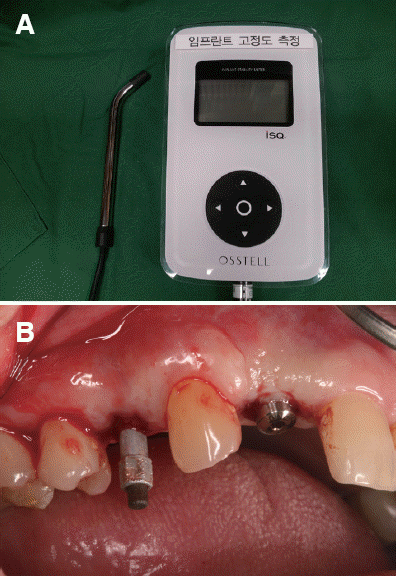
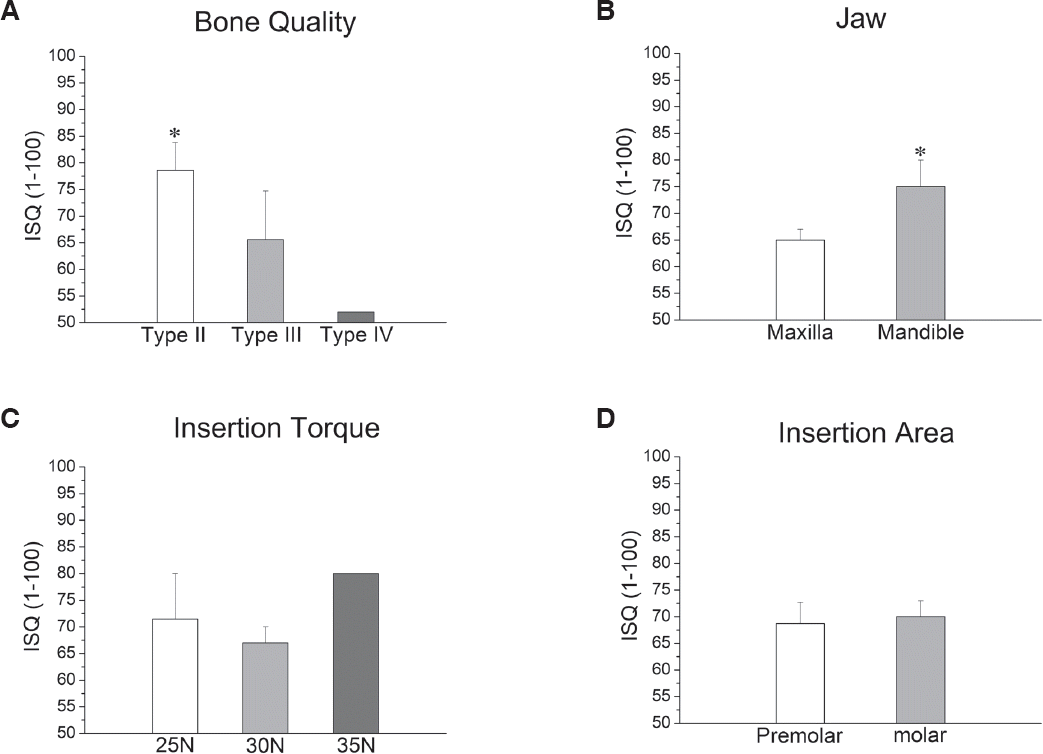

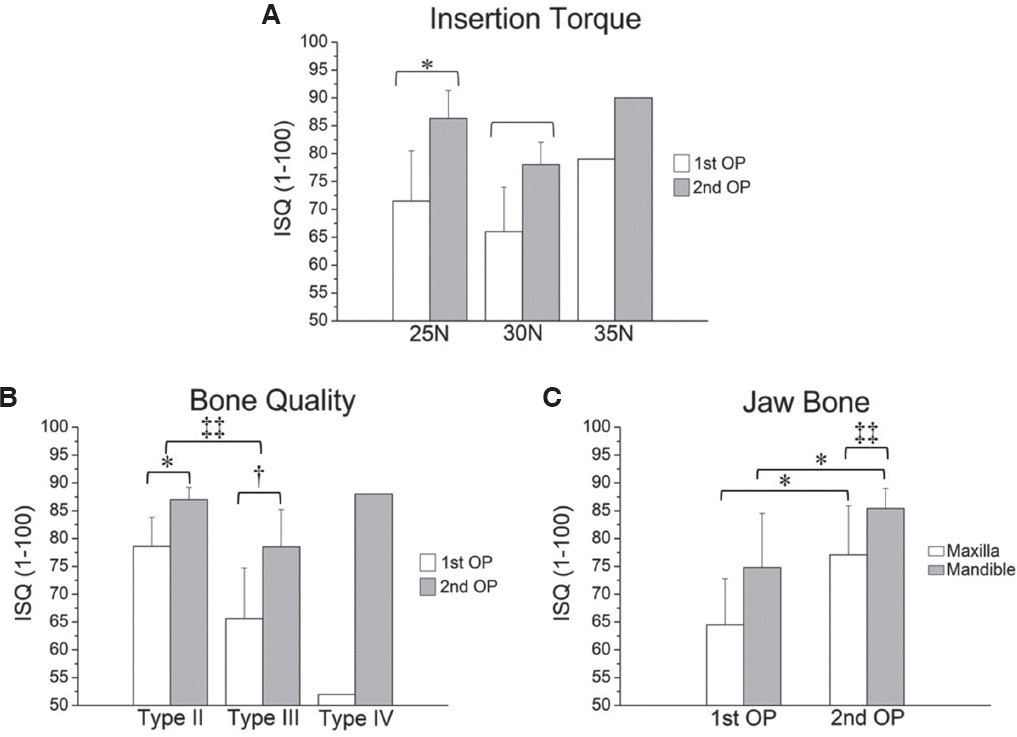




 PDF
PDF Citation
Citation Print
Print


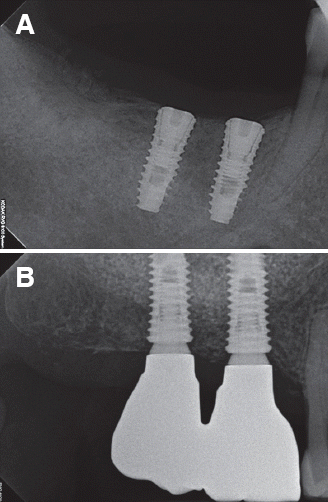
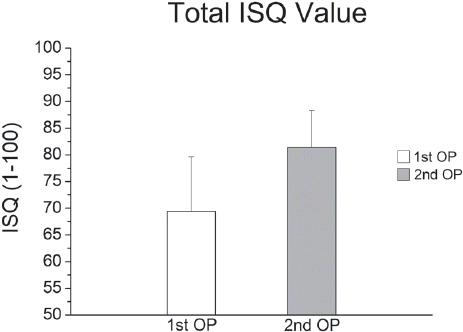
 XML Download
XML Download